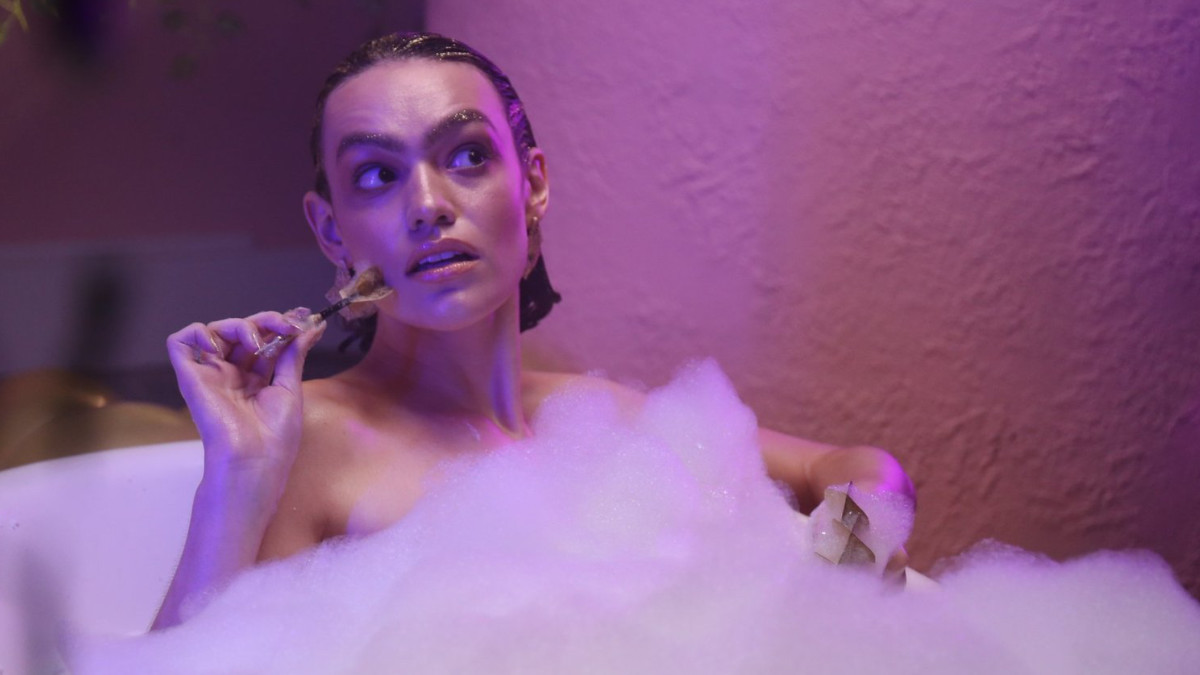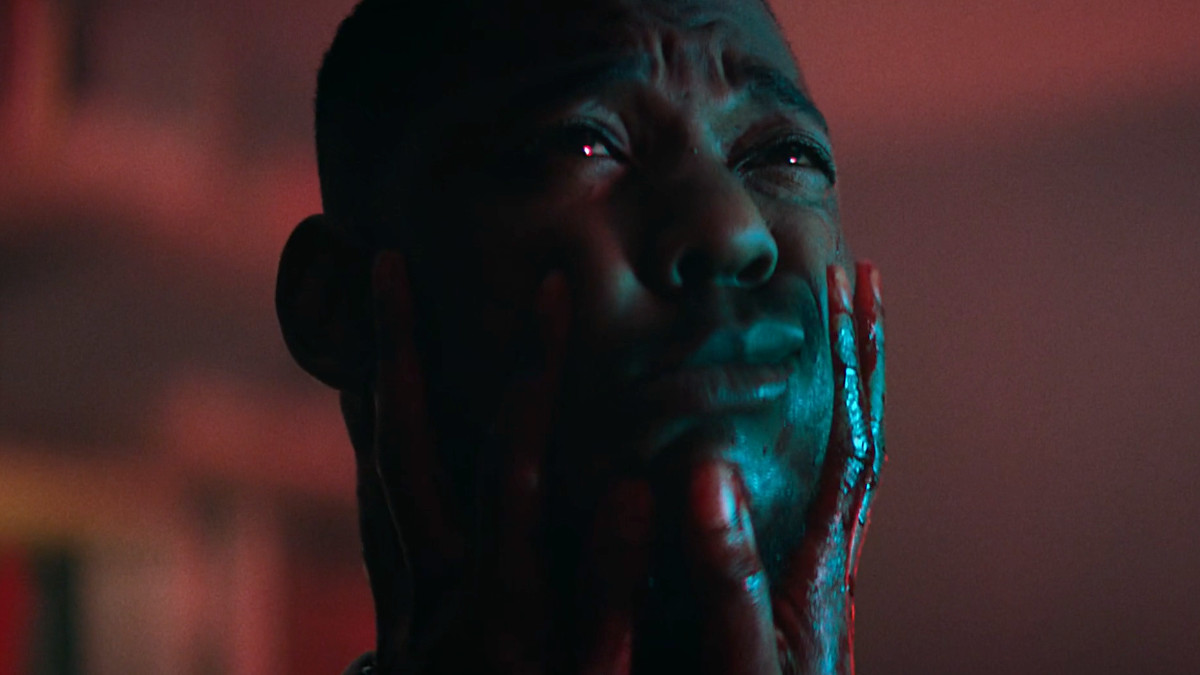A modern exploration of the Narcissus myth, this film delves into the complexities of unrequited love, capturing the emotions of longing, anger, and regret.
“Narcissus,” an evocative short film by Wiley Kaupas, ventures into the realms of experimental storytelling and romance. Starring Haden Gibson and Cassi Cline, the film draws inspiration from the Greek myth of Narcissus, weaving a narrative around the complexities of love and the consequences of unrequited affection. Kaupas embarked on this creative journey to unravel the intricate threads of failed long-term relationships, using the myth as a poignant metaphor to explore the yearning, anger, and regret that often accompany one-sided love.
The Greek myth serves as a profound seed for Kaupas’s contemplative exploration, providing a timeless foundation to delve into the universal and sometimes capricious nature of love. “Narcissus” captures the essence of Echo’s desperate love for Narcissus and the tragic outcomes that unfold, creating a poignant reflection on the struggles inherent in loving someone who cannot reciprocate. As we prepare to delve into an insightful interview with Wiley Kaupas, the mind behind this experimental romance, join us in unraveling the layers of emotion and inspiration that shape “Narcissus.”
How did you translate the emotions of longing, anger, and regret into the visual language of the film, and what visual metaphors did you use to convey these complex feelings?
To translate some of those feelings we tried to create a world that aesthetically felt like it could be a part of the real world, could hold the darker parts of heartbreak well, but still had a surreal quality to it so some of the supernatural and mythological elements of the myth could still exist. Then out of that world we tried to use the three threads of the dissolving love story between Narcissus and Echo, Narcissus’ construction of the mirror portal, and the red ethereal world on the other side of that portal to build our interpretation of the myth around.
To tie all these elements together, we centered everything around the voice over which we called “Echo’s Curse” as the common thread. The hope was to tie together the reality based heartbreak narrative between Echo and Narcissus, and the parallel metaphorical narrative of Narcissus building a monument around herself that ultimately reveals itself to be the portal to her narcissistic inner cravings that she drowns in.
Can you discuss the creative choices made in terms of cinematography and pacing to capture the intensity of emotions and the essence of the Greek myth?
By nature, mythology never really seems to be particularly detailed. It’s usually a key moment leading to another key moment with what happens in between being open to interpretation.
So cinematography wise, in the interest of building around key moments, David (our DP) and I treated every shot and decision on a shot by shot basis. We had a few moments that we knew we needed, like not revealing the mirror portal Narcissus was building until the end, and trying to withhold the narrator’s identity as Echo until the climax of the piece. So we tried to treat each cinematography choice along the way as a building block to create the foundation for each of those moments.
Then in terms of pacing, we treated things similarly with a few moments that we wanted to hit particularly hard. Then we built around those to end on a loud and angry crescendo to reflect some of the jarring and big emotions that come with two people falling out of love.
The Greek myth of Narcissus involves a curse leading to a tragic end. How did you adapt this myth to explore the nature of love and its challenges in your own context, and how did this influence the film’s visual storytelling?
Ironically, the person that this project was created from I personally still deeply care about and I don’t think they embody the characteristics of a narcissist at all. So adapting the myth to my own context was more of an outlet for myself to discharge the feelings from a moment that ultimately wasn’t something that had a reductive explanation like “you’re a narcissist”. But in the moment I remember feeling so confused, angry, and desperate for answers and reconciliation. Those emotions just felt so big that the only way I could cope with them was in an actionable way, but because of the circumstances there wasn’t really anywhere for my personal distress to go.
So at risk of sounding a little silly, my own personal adaptation of the myth and the crew’s collective creation of the visuals was very much a reactive and emotionally fueled process. I personally just made decisions for the visuals based on what felt most reflective to what I had been feeling at the time, and then the crew added their talents and interpretations to make a version that looked a million times better than what I had in my head.
Could you highlight specific visual elements or symbols in “Narcissus” that carry deeper metaphoric meanings related to the themes of love, longing, and regret?
Since this piece does have a lot of abstraction in it, we wanted to leave some room for interpretation to create space for the viewer to hopefully be able to project some of their own experiences with heartbreak into some of the visuals. But with those open ended visuals, we did add in a few elements here and there to honor some of the source material and carry a bit of metaphorical meaning of our own.
For example, in the original myth of Narcissus and Echo, when Narcissus drowns in the stream a flower grows in the place of his body which the Narcissus flower is now named after. Haden (the actress for Echo) has a ton of really cool tattoos and serendipitously also had a tattoo of a flower on the back of her neck. So during filming we leaned into the action of her tearing at the flower tattoo on her neck as a nod to the myth and as a way to visually show how some of the marks of heartbreak are permanent, through the Narcissus flower permanently becoming a part of Echo.
The mirror portal at the end also is another nod to original myth, with Cassi’s (Narcissus) positioning and movements being representative of some of the portrayals of Narcissus staring at his reflection in the stream he drowns in.
The editing of an experimental film is crucial in conveying its narrative and emotions. How did you approach the editing process in “Narcissus” to maintain a high-paced and dynamic flow while ensuring the audience connects with the story?
I would say the editing process with Narcissus was just really a go by feel process. To be completely honest, this project was my first step into a narrative style of filmmaking. So I didn’t really have a good grasp on how the process of translating a story from paper to edit worked. I felt like I had a good idea of what felt right from spending hours and hours just clicking around on random short films, but I didn’t really know how to create those feelings.
So to compensate for that, the editing for Narcissus just turned into a really iterative process. I think by the end I likely had over 150-200 completed cuts of varying degrees of coherence. But luckily I had an extremely patient crew and everyone was so helpful with feedback and helping me piece together the best parts of all those combined cuts into a final draft that (hopefully) expressed heartbreak in an interesting way.
Sound design can enhance the emotional impact of a film. How did you collaborate with the sound team to create an auditory experience that complements the visual storytelling and intensifies the emotions conveyed in the film?
The sound design specifically was a good example of the patience the crew had with the iterative approach I took to the post production process. Eric Crepeau and Noizinski are both incredibly talented artists and would send me drafts and seeds of their thoughts to edit mockups and add to. Then I’d send those back to them and they would polish things and add their own elements to improve those drafts.
We just kept that back and forth process going until we all got to a place that felt like it was capturing the emotions we were going for in the piece.
The film explores the fickle nature of love. How did you balance the intensity of emotions with the dynamic pacing, and what challenges did you encounter in ensuring the audience remains engaged with the narrative?
I would say balancing that intensity and trying to keep the viewer engaged also just came from feeling around in the dark with draft after draft until things just felt right. I figured if it felt good to myself and the rest of the crew, it would hopefully resonate with viewers outside the crew as well.
Experimental films often invite various interpretations. What discussions or reflections do you hope “Narcissus” sparks among viewers regarding the complexities of love, failed relationships, and the merging of personal narratives with mythological themes?
As well as just being a fun and interesting piece to watch, I hope that maybe someone who is feeling the effects of a broken heart could maybe be able to see it isn’t uncommon to feel everything so intensely. I personally hadn’t ever felt anything like that before and I didn’t know if that was the right way to feel. But I think there is a lot to be said about feeling so horrible about losing someone in that way because it just means that since you were able to feel so much love for that person, you have the capacity to feel that same thing for someone else in the future.
What are the films or directors that you looked for inspiration when making this short?
I really love the work of Salomon Ligthelm and Leigh Powis. I love the way they use surreal visual elements and a darker aesthetic to express deeper emotions. The way they express themselves through filmmaking is something I really aspire to be able to do one day.
Finally, can you tell us which are some of your favorite short films out there?
I have a ton! But these are some of the ones that I took a lot of inspiration from for Narcissus
Red Obsession – Maison Vignaux
Ayia Easy – Salomon Ligthelm
Am I special – Leigh Powis



![Dagblind [Nocturne] | Daily Pick Premiere](https://filmshortage.com/wp-content/uploads/2023/06/shortpicks-dagblind-nocturne.jpg)
